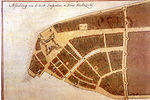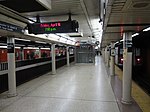Four Continents (French)
Allegorical sculptures in New York CityBowling Green (New York City)Financial District, ManhattanMarble sculptures in the United StatesNew York (state) sculpture stubs ... and 10 more
New York City stubsOutdoor sculptures in ManhattanPersonifications of continentsSculptures by Daniel Chester FrenchSculptures carved by the Piccirilli BrothersSculptures of lionsSculptures of women in New York CitySkulls in artStatues in New York CityTigers in art

Four Continents is the collective name of four sculptures by Daniel Chester French, installed outside the Alexander Hamilton U.S. Custom House at Bowling Green in Manhattan, New York City. French performed the commissions with associate Adolph A. Weinman.
Excerpt from the Wikipedia article Four Continents (French) (License: CC BY-SA 3.0, Authors, Images).Four Continents (French)
State Street, New York Manhattan
Geographical coordinates (GPS) Address Website Nearby Places Show on map
Geographical coordinates (GPS)
| Latitude | Longitude |
|---|---|
| N 40.704166666667 ° | E -74.013611111111 ° |
Address
Alexander Hamilton U.S. Custom House
State Street 1
10275 New York, Manhattan
New York, United States
Open on Google Maps










